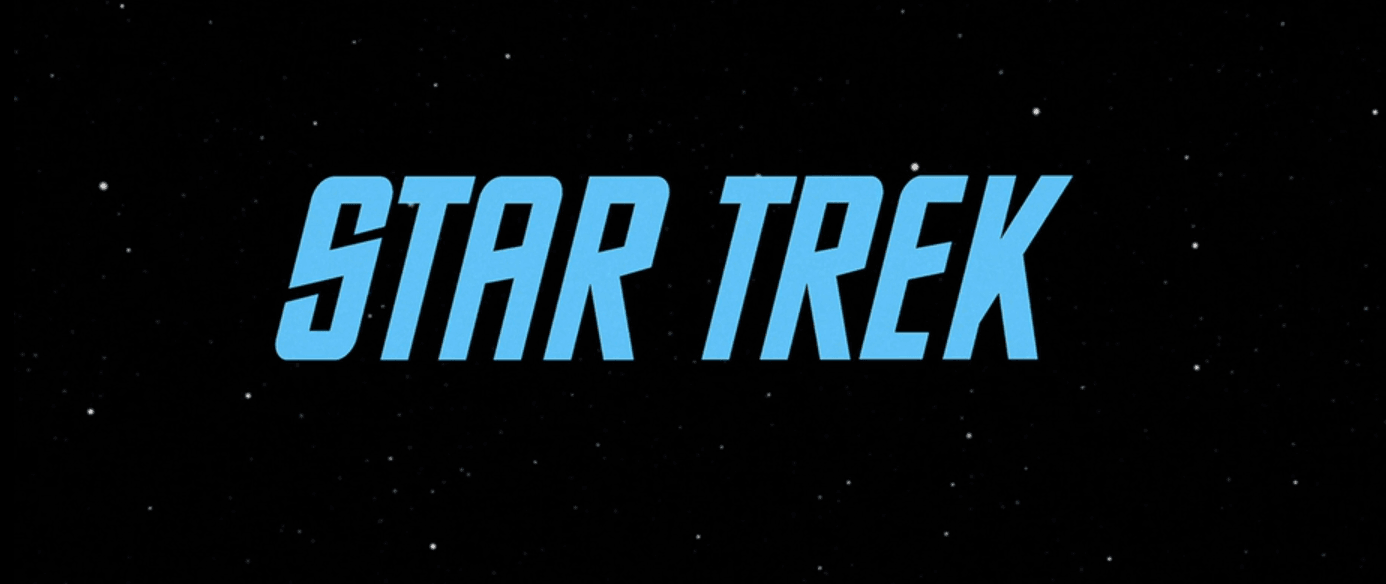
Welcome back to ‘Final Frontier Friday’! Thank you for joining us as we continue our countdown to ‘Discovery’. From now until the new series arrives, we’ll be covering the pilot episode of a different ‘Star Trek’ series every Friday. This week, we’ll be looking at the original series’ second pilot episode, ‘Where No Man Has Gone Before’.
Despite rejecting ‘The Cage‘, NBC took the unprecedented step of ordering a second ‘Star Trek’ pilot. The exact reasons for this are somewhat obscure. The conventional wisdom boils down to some combination of faith in the series’ “‘Wagon Train’ to the stars” concept and the amount of money they had already invested in the first pilot. Remember, however, that for both pilots the network was presented with an assortment of story pitches from which they selected the one that would ultimately be filmed. With this in mind, some accounts from those involved suggest that the decision to produce ‘The Cage’ was made because it was considered the hardest to film, that they were more interested in seeing if the Desilu team could even pull this thing off at all and therefore set out to make it as challenging as they could. Looked at from that angle, ‘The Cage’ starts to look more like a testbed than anything that was ever expected to air. It’s also worth noting that the second pilot was considerably less expensive than the first, with a budget of about $216,000 as opposed to the $630,000 budget given ‘The Cage’. In other words, if ‘The Cage’ was a test to see if the concept could work at all, then ‘Where No Man Has Gone Before’ was a test to see if it could be done on something more closely resembling the episodic budget of a weekly series.
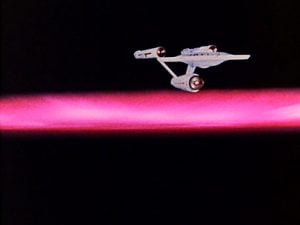 Following the network’s criticism’s of ‘The Cage’, the series underwent several significant changes during the development of ‘Where No Man Has Gone Before’. In fact, in many ways, the new pilot was tailored to meet the network’s expectations, most notably in its more action-oriented nature (as opposed to ‘The Cage’, which had been deemed “too cerebral”). But of course, that wasn’t the only change. The network had been largely unsatisfied with more than a few aspects of the original pilot’s casting, and with Jeffrey Hunter moving on, virtually the entire cast of ‘The Cage’ was replaced. The sole exception was Leonard Nimoy, who returned as a re-conceptualized version of Spock, now sporting the cool, logical demeanor previously associated with Number One.
Following the network’s criticism’s of ‘The Cage’, the series underwent several significant changes during the development of ‘Where No Man Has Gone Before’. In fact, in many ways, the new pilot was tailored to meet the network’s expectations, most notably in its more action-oriented nature (as opposed to ‘The Cage’, which had been deemed “too cerebral”). But of course, that wasn’t the only change. The network had been largely unsatisfied with more than a few aspects of the original pilot’s casting, and with Jeffrey Hunter moving on, virtually the entire cast of ‘The Cage’ was replaced. The sole exception was Leonard Nimoy, who returned as a re-conceptualized version of Spock, now sporting the cool, logical demeanor previously associated with Number One.
This is when the familiar cast of the original ‘Star Trek’ really begins to take shape. While Nimoy remained on board, the show still needed a lead actor. As the producers searched for their captain (now a younger, more dynamic character named James Kirk), the role was offered to both Jack Lord and Lloyd Bridges before finally falling to Canadian actor William Shatner. The cast was further filled out by James Doohan’s Scotty, George Takei’s Sulu (here a physicist rather than helmsman) and Paul Fix as Dr. Mark Piper. The episode also featured guest stars Gary Lockwood and Sally Kellerman as Gary Mitchell and Elizabeth Dehner, respectively.
With all of these changes in place and the episode completed, it was time to screen the pilot for the network. Since we’re here talking about it half a century later, obviously it went over well. Though Roddenberry credited the climactic fist fight with selling the series (and that is a hell of a fight), the likely truth is that this time he actually made the show that he pitched and acted on a great deal of the criticism he’d received after ‘The Cage’. The series would continue to be refined throughout the course of its early run, but at least now it was off to a running start.
En route to the edge of the galaxy, the Enterprise discovers a recorder buoy from the SS Valiant, a starship that was lost a century earlier on a similar mission to probe beyond the Galactic Barrier – an energy field that encircles our galaxy. As the Enterprise crosses the Barrier, the ship is buffeted by the energy that makes up the barrier. A number of casualties are reported, including navigator (and Kirk’s longtime friend) Gary Mitchell and psychiatrist Dr. Elizabeth Dehner, who both collapse during their encounter with the Barrier. The ship reverses course, leaving the area. Though Mitchell claims to feel fine, his eyes have taken on a silver glow.
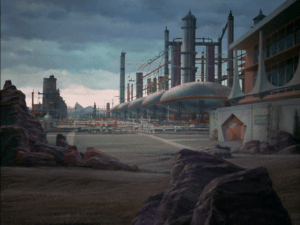 Spock has learned from the Valiant’s flight recorder that the crew of that ship had a similar encounter with the Barrier and that the crew members who were affected the way Mitchell and Dehner were all scored high ratings on tests for extrasensory perception. Dehner and Mitchell, it turns out, both have high ESP ratings, with Mitchell’s being the highest on the ship. Dehner, who has returned to duty with no apparent ill effects, counters Spock’s concern by insisting that there is nothing inherently dangerous about espers. Meanwhile, Mitchell remains under observation in sickbay. Though he seems normal enough in conversation with Kirk, he soon begins exhibiting some odd behaviors, including an unusually booming voice and the ability to read at an extraordinary rate of speed. Piper notes that Mitchell’s vital signs are almost too good to be true before leaving him with Dehner, who Kirk has assigned to monitor his friend. While bemoaning the fact that he is stuck in sickbay, Mitchell accidentally discovers that he can manipulate the lifesign readout (or perhaps his own biology) at will, again with no apparent ill effects. As Dehner continues to test Mitchell and his newfound abilities, the two begin to flirt. This is abruptly interrupted by helmsman Lee Kelso, who Mitchell warns to check the starboard impulse engine. Though Kelso at first thinks it’s a joke, he nonetheless checks and finds that Mitchell was right, despite having been in sick bay since the ship left the Barrier.
Spock has learned from the Valiant’s flight recorder that the crew of that ship had a similar encounter with the Barrier and that the crew members who were affected the way Mitchell and Dehner were all scored high ratings on tests for extrasensory perception. Dehner and Mitchell, it turns out, both have high ESP ratings, with Mitchell’s being the highest on the ship. Dehner, who has returned to duty with no apparent ill effects, counters Spock’s concern by insisting that there is nothing inherently dangerous about espers. Meanwhile, Mitchell remains under observation in sickbay. Though he seems normal enough in conversation with Kirk, he soon begins exhibiting some odd behaviors, including an unusually booming voice and the ability to read at an extraordinary rate of speed. Piper notes that Mitchell’s vital signs are almost too good to be true before leaving him with Dehner, who Kirk has assigned to monitor his friend. While bemoaning the fact that he is stuck in sickbay, Mitchell accidentally discovers that he can manipulate the lifesign readout (or perhaps his own biology) at will, again with no apparent ill effects. As Dehner continues to test Mitchell and his newfound abilities, the two begin to flirt. This is abruptly interrupted by helmsman Lee Kelso, who Mitchell warns to check the starboard impulse engine. Though Kelso at first thinks it’s a joke, he nonetheless checks and finds that Mitchell was right, despite having been in sick bay since the ship left the Barrier.
Arriving late to a staff meeting, Dehner reports on Mitchell’s abilities. Kirk is annoyed that she delayed informing him, while Spock is gravely concerned about the potential implications of Mitchell’s rapidly increasing power. At Spock’s recommendation, the ship proceeds to the nearby planet Delta Vega, hoping to make repairs using the resources at the planet’s automated lithium cracking station. Kirk is less enthused by Spock’s second suggestion, however, which is to either maroon Mitchell on Delta Vega or kill him while they still can.
By the time they arrive at Delta Vega, Mitchell has taken on a much more menacing demeanor, akin to a malevolent god. He is sedated for transport down to the planet, though not before he tried to attack Spock. On the planet, Kirk orders Kelso to rig a destruct switch for the lithium station as a last resort against Mitchell. With Spock and Dehner in tow, Kirk goes to speak with Mitchell, who is confined behind a forcefield. When Mitchell tries to test the forcefield’s strength, Spock doesn’t hesitate to draw his phaser, though it proves unnecessary. Repelled by the forcefield, a stunned Mitchell falls to the floor, his eyes briefly returning to normal in his weakened state. Following another attempt to breakout – after which Mitchell recovers more quickly – Spock has a phaser rifle transported down. Mitchell uses his powers to strangle Kelso with a length of cable, removing the threat of the destruct switch. Mitchell tells Kirk that he should have killed him when he had the chance before making his move, effortlessly rendering Kirk and Spock unconscious. He then steps out of his cell and approaches Dehner, whose eyes now share the same eerie glow.
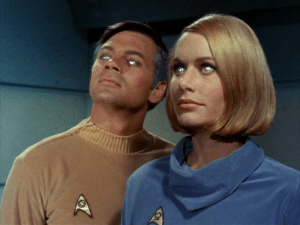 On regaining consciousness, Kirk goes after Mitchell, ordering Piper to have the Enterprise leave orbit and recommend that the planet be bombarded with a lethal concentration of neutron radiation if he fails to return. As Dehner begins to discover her new powers, Mitchell reveals the breadth of his own, creating a thriving garden on the otherwise barren surface. Kirk soon approaches, though Dehner speaks with him before he can reach Mitchell, allowing him the chance to plead with her remaining humanity. This all falls on deaf ears, and Mitchell soon arrives. Now impervious even to phaser fire, the newly minted god mocks Kirk, toying with him and even creating a grave before moving in for the kill. Dehner, however, comes to Kirk’s defense. The two clash, leaving Dehner near death and Mitchell weakened enough for Kirk to stand a fighting chance. Kirk is able to maneuver Mitchell into the open grave, at which point he goes for the phaser rifle. Instead of shooting Mitchell, this time he aims for the rock face behind him, the ensuing collapse leaving the would be god dead and buried. Dehner soon succumbs to her own injuries and Kirk returns to the Enterprise. As the ship leaves Delta Vega behind, Kirk makes a note in his log that Dehner and Mitchell died in performance of their duties, explaining to Spock that neither of the two asked for what happened to them and that their service records should end with dignity.
On regaining consciousness, Kirk goes after Mitchell, ordering Piper to have the Enterprise leave orbit and recommend that the planet be bombarded with a lethal concentration of neutron radiation if he fails to return. As Dehner begins to discover her new powers, Mitchell reveals the breadth of his own, creating a thriving garden on the otherwise barren surface. Kirk soon approaches, though Dehner speaks with him before he can reach Mitchell, allowing him the chance to plead with her remaining humanity. This all falls on deaf ears, and Mitchell soon arrives. Now impervious even to phaser fire, the newly minted god mocks Kirk, toying with him and even creating a grave before moving in for the kill. Dehner, however, comes to Kirk’s defense. The two clash, leaving Dehner near death and Mitchell weakened enough for Kirk to stand a fighting chance. Kirk is able to maneuver Mitchell into the open grave, at which point he goes for the phaser rifle. Instead of shooting Mitchell, this time he aims for the rock face behind him, the ensuing collapse leaving the would be god dead and buried. Dehner soon succumbs to her own injuries and Kirk returns to the Enterprise. As the ship leaves Delta Vega behind, Kirk makes a note in his log that Dehner and Mitchell died in performance of their duties, explaining to Spock that neither of the two asked for what happened to them and that their service records should end with dignity.
Now this is more like it. It’s not exactly the ‘Star Trek’ we all know and love, but this is where things really start to come together, even if all of the pieces aren’t quite in place yet. Most notably, the characters of Uhura and McCoy wouldn’t appear until the first regular episode, ‘The Corbomite Maneuver’. Though it is unquestionably smart sci-fi, ‘Where No Man Has Gone Before’ presents much more of an adventure show than ‘The Cage’ did.
I’ve spent a fair bit of ink on the fact that this is a more action driven episode than ‘The Cage’, and while that is true, it’s not the only important difference. ‘Where No Man Has Gone Before’ is also a more economical episode than ‘The Cage’. While it’s not afraid to slow down for character beats, this one doesn’t linger on them the way (for better or worse) its predecessor did. It also doesn’t stop dead in its tracks for a dance number. And as Roddenberry realized, the fist fight between Kirk and Mitchell really does underscore the tonal differences between the two pilots. Simply put, going toe-to-toe with a god is a very Kirk thing to do, whereas despite his threats, it’s hard to picture Pike actually punching a Talosian in the face.
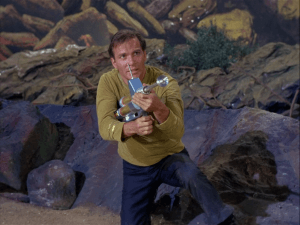
But despite the tonal shift, it really is the characters that make all the difference. And to the surprise of no one, it really does come down to Kirk and Spock. While Spock is a bit colder here than we’re used to, by and large, the reimagined version of the character arrives for the most part fully formed. And then there’s Kirk. In Shatner, the show had found its ideal leading man. And as Nimoy recalled, Shatner “brought with him a great deal of zest and passion.” It was that energy that made it possible for Nimoy to find his own niche on the show, as he was never quite sure how to play off of Jeffrey Hunter’s more reserved and thoughtful performance. And that is perhaps the key to it all, as the chemistry between its leads is the rock on which ‘Star Trek’ would build its church.
And what about the guest stars? Gary Lockwood turns in a memorable performance as Mitchell, though as well as Mitchell is played, he is the sort of character that you could only get away with using in a pilot. Otherwise, he becomes the random best friend who we’ve never heard of before, making it almost too obvious that the episode won’t end well for him. With that said, his relationship with Kirk is very well-drawn, especially given the amount of time they had to establish it before he starts to go bad. Dehner, though? Suffice to say that Sally Kellerman wasn’t exactly given a lot to work with. She doesn’t really bring much to the proceedings until the very end, almost functioning more as a plot device than a fully developed character. Which is a shame. Having said all of that, both of their performances benefitted from a happy accident on the set. The silver contact lenses they had to wear when their powers manifested made it nearly impossible to see (Lockwood described it as “acting in the dark”), forcing them to tilt their heads back and look down their noses. This added a certain haughtiness to their performances, underscoring their increasing detachment from humanity.
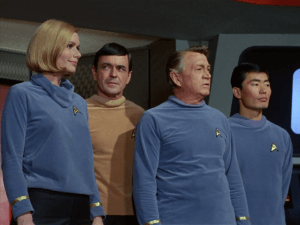 And finally, it’s a minor issue, but I can’t help but be disappointed by how small Dr. Piper’s role is. That’s partly a function of how memorable Dr. Boyce was in ‘The Cage’ (and, of course, how wonderful Dr. McCoy will be), but also of the fact that as a kid I was fascinated by Dr. Piper. Or at least, I was fascinated by the idea of him. Discovering ‘Star Trek in an age where you didn’t have all of it at your fingertips, ready to stream (and even the DVD box sets were still a good decade away), you would occasionally see references to this character who was the ship’s doctor before McCoy came along. Nothing detailed, just a tantalizing hint at a character and a status quo that I couldn’t help but be curious about. So when I finally saw the episode and realized he was just sort of there? Yeah, that was kind of a letdown. But I’m mostly over it now. I swear.
And finally, it’s a minor issue, but I can’t help but be disappointed by how small Dr. Piper’s role is. That’s partly a function of how memorable Dr. Boyce was in ‘The Cage’ (and, of course, how wonderful Dr. McCoy will be), but also of the fact that as a kid I was fascinated by Dr. Piper. Or at least, I was fascinated by the idea of him. Discovering ‘Star Trek in an age where you didn’t have all of it at your fingertips, ready to stream (and even the DVD box sets were still a good decade away), you would occasionally see references to this character who was the ship’s doctor before McCoy came along. Nothing detailed, just a tantalizing hint at a character and a status quo that I couldn’t help but be curious about. So when I finally saw the episode and realized he was just sort of there? Yeah, that was kind of a letdown. But I’m mostly over it now. I swear.
Thanks once again for joining us. As always, I invite you to share your thoughts on ”Where No Man Has Gone Before ‘ in the comments. And of course, make sure you join us next week for our coverage of ‘Beyond the Farthest Star’, the premiere episode of ‘Star Trek: The Animated Series’.
